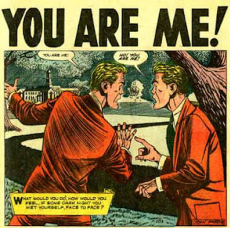
Email: reecejordan98@hotmail.co.uk
Total Article : 168
About Me:18-year-old sixth form student, studying English Literature, History and Government and Politics. My articles will broadly cover topics from the current affairs of politics to reviews of books and albums, as well as adding my own creative pieces, whether it be short fiction or general opinion.

As the prime voice on notions of the uncanny, Sigmund Freud states that ‘an uncanny effect often arises when the boundary between fantasy and reality is blurred’. Whilst Ashley Henyan is too zealous and dogmatic in suggesting that a Freudian reading of Margaret Atwood’s The Handmaid’s Tale provides the ‘novel’s true meaning’, he does nonetheless prompt an intriguing frame through which to read the text. This essay will assert the argument that Atwood’s The Handmaid’s Tale incorporates elements of Freud’s definitions of the uncanny, with particular emphasis on the blurred boundary between reality and fantasy as well as the ‘double’ as a means to construct the dystopian aesthetic within the novel. Furthermore, this essay will attempt to show how Atwood also inverts Freud’s notion that ‘there is nothing uncanny’ about fairy tales with their ‘wish-fulfilments’, and how she exploits their utopian elements to create an uncanny reality within the text.
The Handmaid’s Tale blurs ‘the boundary between fantasy and reality’ not only to show how to ‘overcome oppressive designs imposed on human beings’, as Jeanne Campbell Reesman argues, but to also create an uncanny discomfort. In a moment of meta-narrative within the novel, the protagonist, Offred, states, ‘those who can believe that such stories [her own story that she’s telling] are just stories stand a better chance’ and that ‘attaching [something] to the world of fact [reality] is riskier, more hazardous’. This is one example in the novel where ‘hazardous’ reality and haven-like fantasy are separated, rather than obscurely merged. Offred distances her story from the danger of reality and instead distorts it into a fantasy world, which suggests, perhaps, that in light of stark realities of oppression, such as Offred being subject to the authoritarian and theocratic Gilead regime, fantasy offers some solace, a ‘better chance’.
However, the uncanny effect within the novel is not when fantasy and reality are distinguished, but rather when they are blurred. In certain parts of the novel, Atwood offers us flashbacks into Offred’s pre-Gilead life. In one such instance, Offred tells of the initial stages of the overthrow of the government which coincides with the loss of her own job. The events within this passage echo past real-life events, such as ‘some other army’ overtaking the present one (showing parallels with the Bolshevik revolution of Russia) and the fact that, ‘nobody wanted to be reported, for disloyalty’, which echoes the terror state of the Nazi regime in Germany.
Image Credits: scalar.usc.edu

0 Comment:
Be the first one to comment on this article.